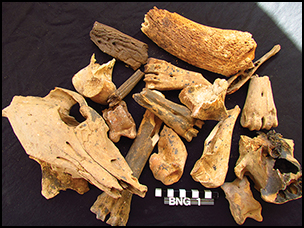Article contents
Pork for pilgrims: livestock breeding and meat consumption at medieval Banganarti, Nubia
Published online by Cambridge University Press: 18 February 2020
Abstract

During the eleventh to thirteenth centuries AD, the small settlement of Banganarti grew into one of the most important pilgrimage centres in the Middle Nile Valley. Ongoing excavations have yielded clear evidence of its unique economic and social diversity. Large-scale pig breeding, attested by the ubiquitous remains of pigs in the archaeozoological record, is particularly significant and unlike that found on other regional medieval sites. The authors investigate the popularity of pig breeding and pork consumption at Banganarti in relation to the specific role played by the site in the religious landscape of the medieval kingdom of Makuria.
- Type
- Research Article
- Information
- Copyright
- Copyright © Antiquity Publications Ltd, 2020
References
- 4
- Cited by


